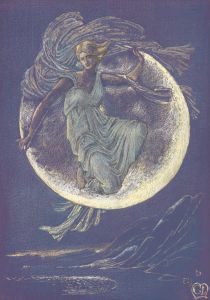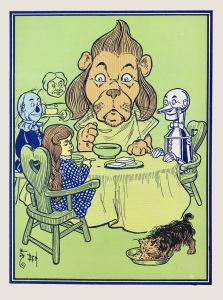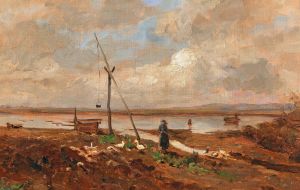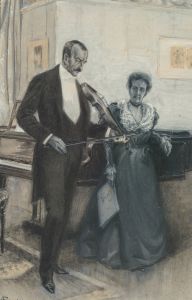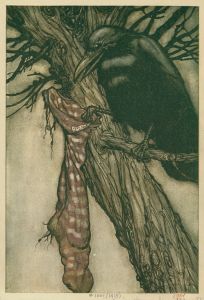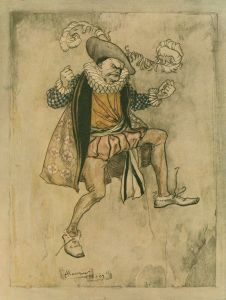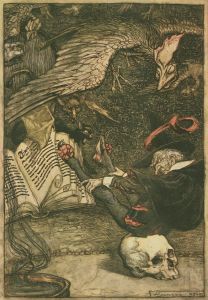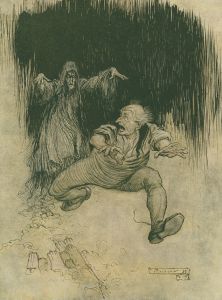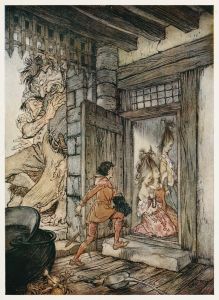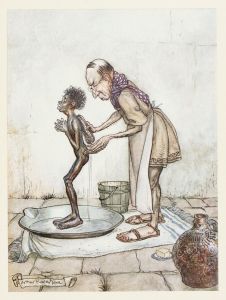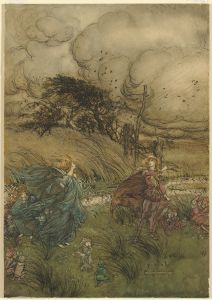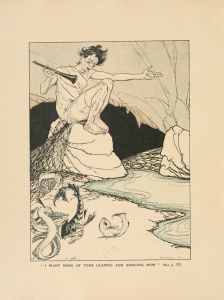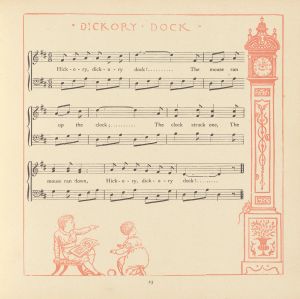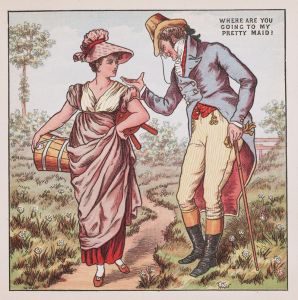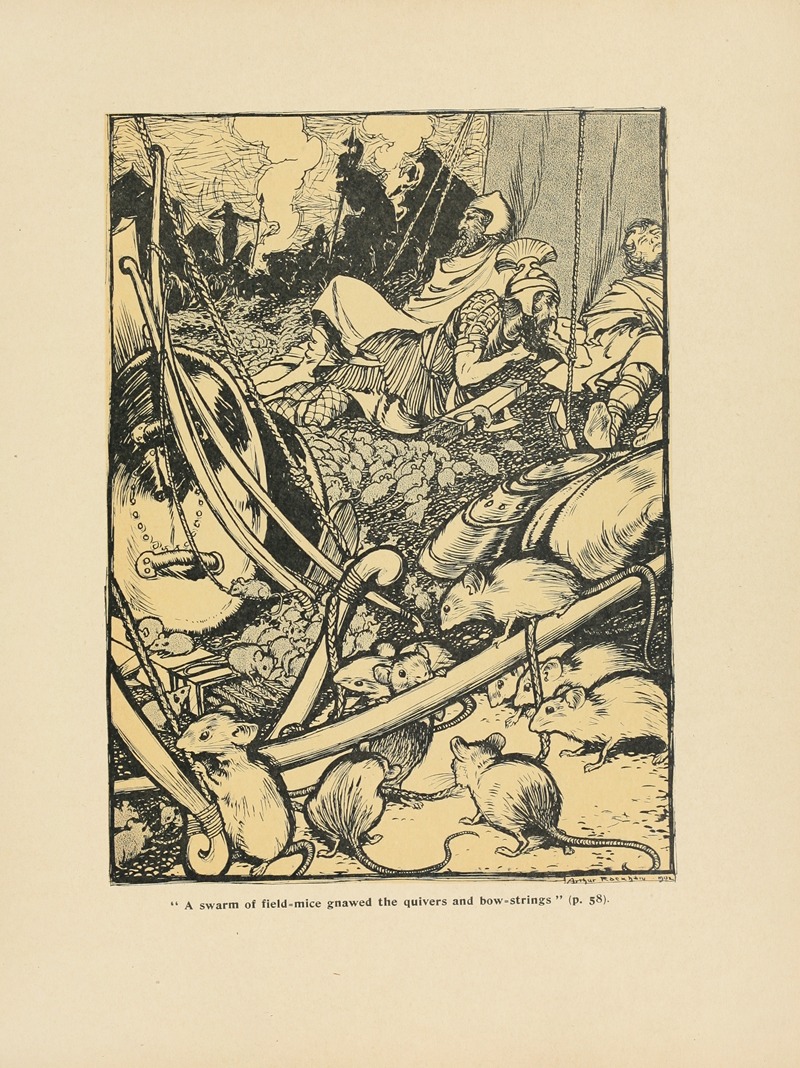
A swarm of field-mice gnawed the quivers and bow-strings
A hand-painted replica of Arthur Rackham’s masterpiece A swarm of field-mice gnawed the quivers and bow-strings, meticulously crafted by professional artists to capture the true essence of the original. Each piece is created with museum-quality canvas and rare mineral pigments, carefully painted by experienced artists with delicate brushstrokes and rich, layered colors to perfectly recreate the texture of the original artwork. Unlike machine-printed reproductions, this hand-painted version brings the painting to life, infused with the artist’s emotions and skill in every stroke. Whether for personal collection or home decoration, it instantly elevates the artistic atmosphere of any space.
Arthur Rackham (1867–1939) was a prominent English book illustrator known for his distinctive style, which combined haunting, dreamlike imagery with intricate detail. One of his notable works is the illustration titled "A swarm of field-mice gnawed the quivers and bow-strings," which is part of his illustrations for Kenneth Grahame's classic children's book "The Wind in the Willows," first published in 1908.
Rackham's illustration was created for the 1940 edition of "The Wind in the Willows," which was published posthumously. This edition was notable for featuring Rackham's illustrations, which brought a new visual dimension to Grahame's beloved story. Rackham's work on this book is celebrated for its ability to capture the whimsical and pastoral essence of the narrative, while also infusing it with a sense of mystery and enchantment.
In "A swarm of field-mice gnawed the quivers and bow-strings," Rackham depicts a scene from the chapter "The Piper at the Gates of Dawn." This chapter is one of the most mystical and lyrical parts of the book, where the characters Rat and Mole encounter the god Pan. The illustration shows a swarm of field mice diligently gnawing at the quivers and bow-strings, which is a reference to the preparations for the battle to reclaim Toad Hall from the weasels and stoats.
Rackham's technique involved the use of pen and ink, combined with watercolor washes, to create his signature ethereal and detailed style. His illustrations often featured flowing lines, delicate shading, and a keen attention to the natural world, all of which are evident in this particular piece. The field mice are rendered with a sense of movement and purpose, their tiny forms meticulously detailed against the backdrop of the forest floor.
Arthur Rackham's contribution to "The Wind in the Willows" is significant not only for its artistic merit but also for how it complements and enhances Grahame's text. His illustrations provide a visual narrative that enriches the reader's experience, adding depth and texture to the story. Rackham's ability to convey the magical and the mundane in equal measure makes his work enduringly popular among both children and adults.
Overall, "A swarm of field-mice gnawed the quivers and bow-strings" is a testament to Rackham's skill as an illustrator and his ability to bring literary scenes to life with his unique artistic vision. His work continues to be celebrated for its contribution to the world of book illustration and its lasting impact on the visual interpretation of classic literature.





